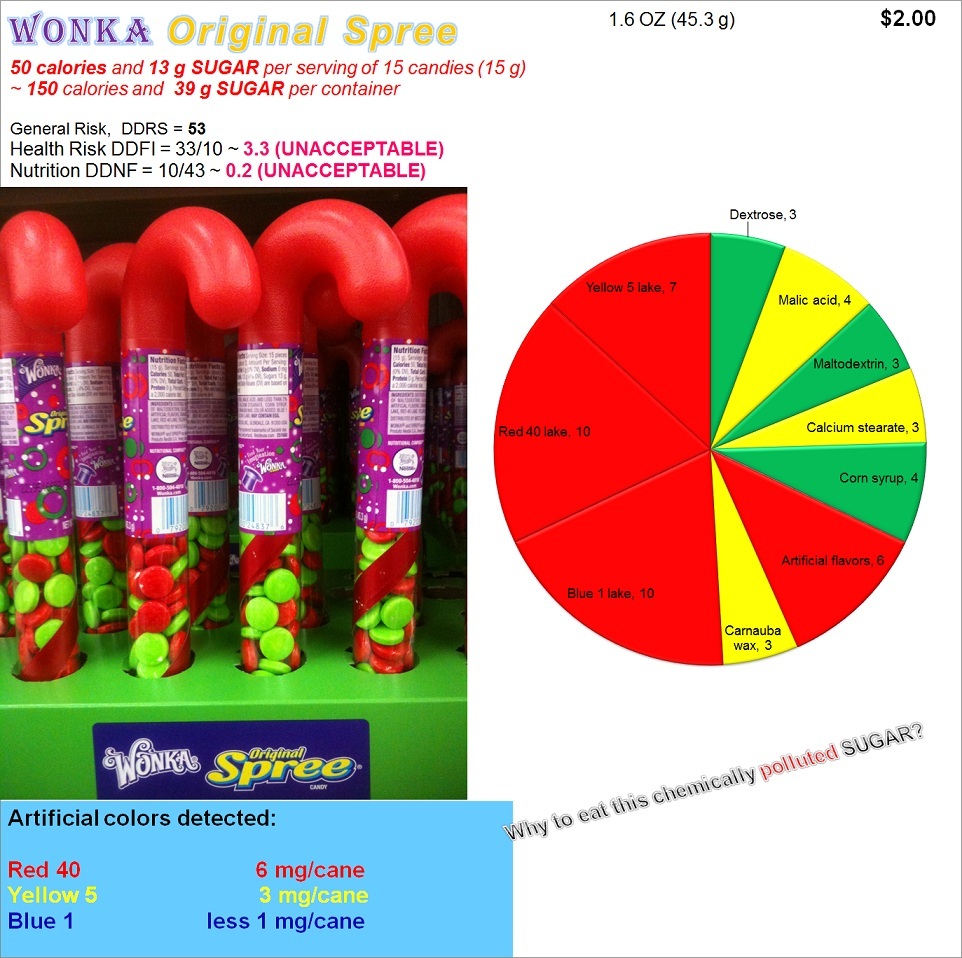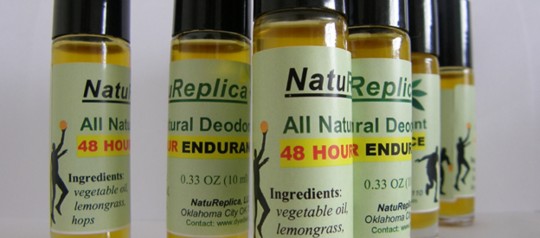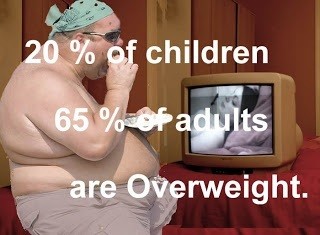Wonka Candy Cane: Artificial Flavor of Christmas
First candy cane came to existence in 1670 when choirmaster at Cologne Cathedral (Germany) wanted to calm noisy children during Christmas Eve by treating them to the candies. He asked a local candy maker to make some sweet sticks for them. I don’t know what were that original candies made of but modern candy canes contain a number of chemical food additives that were unknown at that time. It looks like the major goal of today’s candy makers is to attract children’s attention by any means; first and foremost by dying the candies with artificial food colorants. Nobody seems to care that the dyes are particularly unhealthy for children (Behavior, Learning and Health: The Dietary Connection).
DyeDiet Doesn’t Buy It!
 Wonka Original Spree candy cane: Risk, Nutrition and Dye Content
Wonka Original Spree candy cane: Risk, Nutrition and Dye Content
Below are the food additives to avoid:
- Artificial colors: Red 40, Yellow 5 and Blue 1. In this candy cane they are introduced in the form of so called lakes that can be dispersed in oil. These versions obtained by combining of the original dyes with calcium or aluminum salts. Although measured artificial color content is not alarmingly high (a few milligrams per cane) my question always is: Why to allow any amounts of needless hostile chemicals into the blood and brains of our lovely children?
- Artificial flavor is normally a cheap synthetic chemical added to mimic natural flavor.
I do not see why this is going to be “Merry Christmas” if you treat your children to Wonka Original Spree candy canes. The DyeDiet diagram looks NOT good: it is more than half-red. This means that you will be exposed to UNACCEPTABLE health risk coming with the chemicals: DDFI = 33/10 = 3.3 and you will NOT receive nutritional value you deserve: DDNF = 10/43 ~ 0.2.
Calcium stearate is a surface conditioner in hard candies; it is not a harmful food additive. Spree is a candy manufactured by The Willy Wonka Candy Company, a brand now owned by Nestlé. First introduced in 1971, Spree is classified as a compressed dextrose (glucose) candy, covered in a colored fruit-flavored shell. As we now see, both colors and flavors are artificial and so the whole taste of Christmas they offer to your child must be artificial too. Jesus would reject such candies as disrespect…
Bottom line. Wonka Original Spree candy cane is another eye-catching but unhealthy product which no loving parents should buy for a child. All it has to offer for $2 is 39 g (~ 10 teaspoons) of sugar contaminated with a pinch of artificial food colorants and flavors. Liberty Orchards Fruit & Nut candies are much more appropriate and respectful choice! They will give your children real taste of Merry Christmas and a healthy joy!
Category: Candy, Food Dyes Exposure







I went to a winter dance at school today and they were selling Lofthouse Cookies. I bought and ate 2 of them. Is that OK?
Sorry to know that they keep selling these ridiculously processed cookies at schools. But not to worry, two cookies you ate did not bring notable harm to your health. What is really dangerous and this is exactly what I keep saying at DyeDiet is regular long time consumption of the products like Lofthouse cookies, drinking coke and eating junk food like corn dogs ALL THE TIME. This kind of DIET is particularly damaging for children’s development and overall health. So once again: Dangers and health damage only come from bad diet choices made on regular (weekly or daily) basis for a long time (several years). It is in everyone’s best interests to clearly understand and follow the course of healthy food and drink choices as early in their lives as possible.